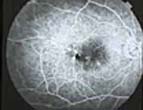Prophylactic approaches to AMD: the best hope for saving vision
As a potentially sight-compromising disease, age-related macular degeneration should be diagnosed and treated as quickly as possible. For patients with the wet form of AMD, early detection and treatment through surgery or photodynamic therapy (PDT) is essential.
However, because there remains no cure for AMD, a prophylactic approach is often the most effective means of fighting the disease.
“Prevention is very important, because once you develop wet macular degeneration, the horse is out of the barn,” said Allen Ho, MD, professor of ophthalmology, Wills Eye Hospital, Thomas Jefferson University, Philadelphia. “Our current treatments for wet macular degeneration are only palliative. We don’t have any therapy that brings vision back.”
The LAST study: reversing symptoms?
A study reported in the April 2004 issue of Optometry: The Journal of the American Optometric Association has found that lutein or lutein and antioxidants may be effective in reversing vision loss related to AMD.
|
|
The Lutein Antioxidant Supplementation Trial (LAST) is the first study to show actual improvement in visual function among dry AMD patients. “This is the first randomized, placebo-controlled clinical trial to use lutein or lutein antioxidants therapeutically,” said Stuart Richer, OD, PhD, FAAO, chief of optometry at the North Chicago VA Medical Center and lead investigator of the study. “We’re not using them prophylactically.”
The study involved patients from the North Chicago VA Hospital and Hines VA Hospital. In the study, 90 AMD patients were supplemented daily with a capsule containing 10 mg of crystalline FloraGLO lutein (Kemin Foods), an OcuPower supplement of 10 mg crystalline lutein plus a mixed antioxidant formula (Nutraceutical Sciences Institute), or placebo for 12 months.
According to a study abstract, patients taking the lutein supplements experienced significant improvements in several objective measurements of visual function, including visual acuity, contrast sensitivity and glare recovery. Patients also experienced an approximately 40% increase in macular pigment density compared to those on placebo.
“The patients in our study improved almost a line of visual acuity over the course of a year and improved their contrast sensitivity by one step. We also had many patients with improved Amsler grid,” Dr. Richer told Primary Care Optometry News. “So this is very provocative. We should be looking at this very seriously as a therapeutic intervention mode. We are looking potentially at a reversal of the disease process if larger-scale, longer-term studies confirm these preliminary results.”
Dr. Richer said although the long-term effects of lutein intervention could not be gleaned from the study, the findings are nevertheless very promising. “Because it was only a year-long study, we cannot say anything about long-term protective effects in preventing advanced disease,” he said. “However, post-hoc analysis of AREDS data presented recently at ARVO suggests that lutein provides a preventive effect against advanced AMD as well.”
Diet, lifestyle and supplements
In terms of AMD prophylactic approaches, patients can easily implement several preventive lifestyle choices.
“I tell them to stop smoking if they can and to eat a healthy diet with lots of fruits and vegetables,” said Peter Lou, MD, senior surgeon in ophthalmology at Massachusetts Eye and Ear Infirmary, Boston. “I advise them to get the natural dietary antioxidants and natural vitamins and, in addition, take a supplement once a day.
Dr. Richer said he strongly recommends that patients incorporate spinach into their diets. “I recommend two ounces of spinach per day, or the equivalent, and omega-3 fatty acids every other day,” he said. “There are so many health benefits in eating spinach and fish, and they are relatively accessible and inexpensive.”
Dr. Richer said he also recommends that patients control blood pressure and sunlight exposure and exercise regularly.
Dr. Ho said he encourages a healthy, well-balanced diet for AMD prevention. “Some people think that leafy, green vegetables can have a positive effect for patients with AMD, but that is not necessarily cause-and-effect,” he told Primary Care Optometry News.
He said for patients with appropriate levels of dry macular degeneration, he recommends the AREDS supplements and a multivitamin such as Centrum Silver (Wyeth Consumer Healthcare).
While he does feel that nutrients are crucial, Dr. Lou cautioned against too much reliance on vitamin supplements for AMD prophylaxis. “Right now, there is way too much emphasis on taking these artificial vitamin pills,” he said in an interview. “When you look at the Age-Related Eye Disease Study (AREDS) vitamin study, after taking four pills a day for 7 years, no one saw better. It did decrease the risk in the high-risk group by 25%, so it can prevent patients from getting worse. But prophylaxis is an active process, not a passive one.”
Be aware of risk factors
Because prevention is especially important for AMD, practitioners need to be aware of the risk factors that might warrant a prophylactic approach to the disease.
“Certainly, there is no harm in doing this for the entire population; there is only benefit in terms of nutrients,” Dr. Richer said. “But if you have a family history of AMD, a blue-eyed or light complexion or easy sun tanning susceptibility, those would be the sort of risk factors that might warrant prophylaxis.”
Dr. Ho said patients who have already lost vision in one eye due to AMD are most in need of prophylaxis. “The patients who have the dry form of AMD in only one eye are at the highest risk for losing vision,” he said. “The prophylaxis is to prevent dry from becoming wet.”
Dr. Lou cited family history of AMD, wet or dry, smoking and high cholesterol as important risk factors to watch for. “Smokers have four times the risk of going blind,” he said. “And high cholesterol can often interfere with retinal circulation.”
For patients who do not have AMD, Dr. Lou said he would not hasten to recommend vitamin supplements, but first would advise a healthy lifestyle. “I think the best thing for prophylaxis is a clean lifestyle,” he said. “Cut back on bad habits like smoking. Drink moderately and sensibly, and exercise. I am not going to tell a 70-year-old to jog, but they should find activities they enjoy, like gardening or walking the dog.”
UV/short-wavelength protection
Exposure of the retina to short-wavelength blue light is considered to be another risk factor in the development of AMD. For this reason, practitioners also recommend that patients protect their eyes from too much sunlight.
“Protecting against UV is important to skin and eyes,” Dr. Ho said. “In terms of short-wavelength protection, the new Acrysof Natural (Alcon, Ft. Worth, Texas) IOLs have blue light filters. It has some good theoretical basis, but there is, at this time, a lack of proof.”
Dr. Lou said patients who are exposed to high-intensity UV light should definitely wear sunglasses. “We know that even if the lens tries to protect the retina, some UV will get through, and then we suspect it will promote macular degeneration,” he said. “When UV rays hit the retina, they cause the ionization of free radicals. That is where the antioxidants come in. I would recommend that patients wear sunglasses if they are going to be exposed to strong UV light.”
For Your Information:
- Allen Ho, MD, is a professor of ophthalmology, Wills Eye Hospital, Thomas Jefferson University. He can be reached at Retina Service of Wills Eye Hospital, PC 900 Walnut St., 2nd Floor, Philadelphia, PA 19107; (215) 928-3300 fax: (215) 238-0804; e-mail: acho@att.net. Dr. Ho is a paid consultant to Alcon as a member of the company’s Retinal Advisory Council.
- Stuart Richer, OD, PhD, FAAO, is chief of optometry at the North Chicago VA Medical Center and lead investigator of the LAST study. He can be reached at North Chicago VA Medical Center, Eye Clinic, 112e, North Chicago, IL 60064; (847) 688-1900; fax: (847) 578-6924; e-mail: stuart.richer1@med.va.gov.
- Peter Lou, MD, is a senior surgeon at Massachusetts Eye and Ear Infirmary, Boston, and a clinical instructor in ophthalmology at Harvard University. He can be reached at 10 Hawthorne Place, Suite 106, Boston, MA 02114; (617) 523-0955; fax: (617) 523-5376.
- Neither Dr. Richer nor Dr. Lou has any financial interest in the products mentioned in this article, nor are they paid consultants to any companies mentioned.


